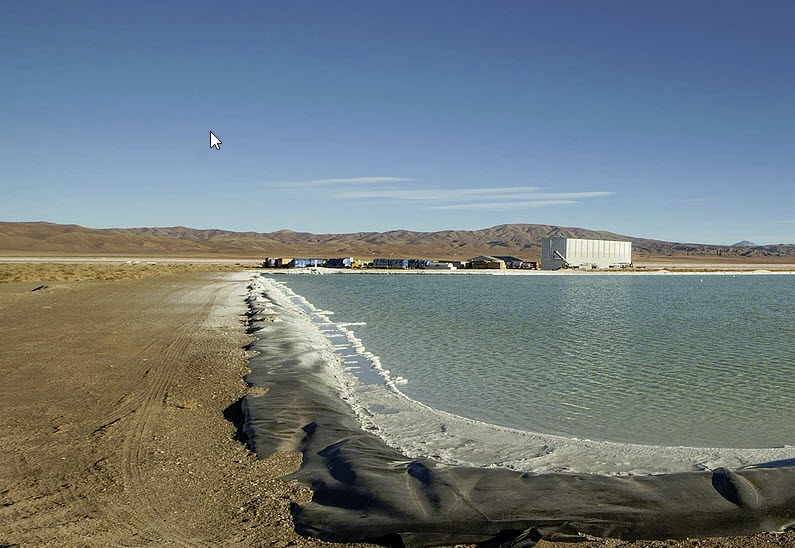Peine, Chile and Susques, Argentina – Within minutes of driving out of tourist hotspot San Pedro de Atacama in northern Chile you are deep in the Earth’s driest desert. Vast stretches of reddish-orange sand fly past on both sides. Every now and then you pass the odd dwelling, but this sparse setting changes when you reach the Salar de Atacama: Chile’s largest salt flat and the third largest in the world. Rudimentary corrugated iron houses start appearing, then communities.
After an hour, Peine appears on the horizon. A small village of around 300 people, it has become the crucible for a battle between the local indigenous communities and some of the world’s biggest and most powerful mining companies. The communities argue that mining activity – which consumes vast amounts of water – is wrecking the delicate conditions on which their traditional lifestyles depend.
Peine residents are engaged in a battle over water access with Anglo-Australian mining giant BHP Billiton, which pumps water from the Salar for use at Escondida, the largest copper mine in the world. Escondida currently has a license to pump 1400 litres of water a second until 2020 and BHP hopes to extend this permission for another decade, though it is promising to cut the rate to 640 litres a second.
And Escondida is not the only major copper project in the region. Zaldivar, a joint venture between the Chilean group Antofagasta plc (listed on the London Stock Exchange, with headquarters in London as well as Santiago) and the Canadian mining giant Barrick Gold, is located less than 10 km from Escondida. Zaldivar is currently permitted 500 litres of water a second until 2025 and Antofagasta is requesting an extension until 2029, though like BHP it is promising to reduce consumption.
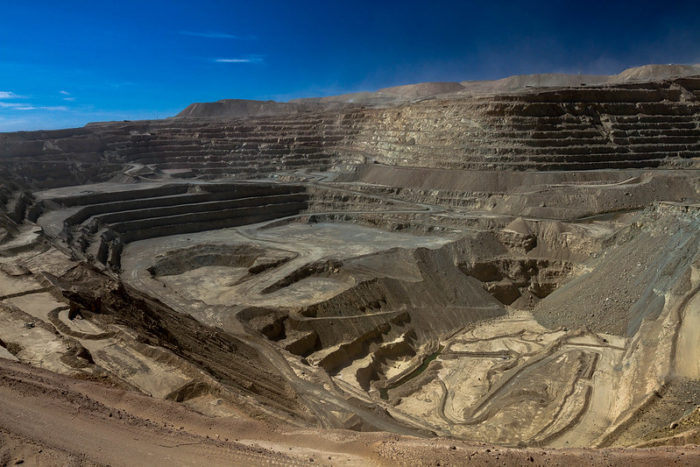
In contrast, the community of Peine is allowed to pump just 1.5 litres of water a second. This is often insufficient and residents complain of shortages.
And even if the companies are true to their word and manage to reduce their water consumption over the next decade, locals are concerned about the long-term effects. ‘In our view it’s impossible,’ says Sergio Cubillos, a local community representative. ‘According to studies we have carried out ourselves, which have been verified by professionals, it would mean over extraction. In Campo de Monturaqui [one of the aquifers that supplies the community] they are almost down to the fossil waters already – water that has been there for a really long time.’
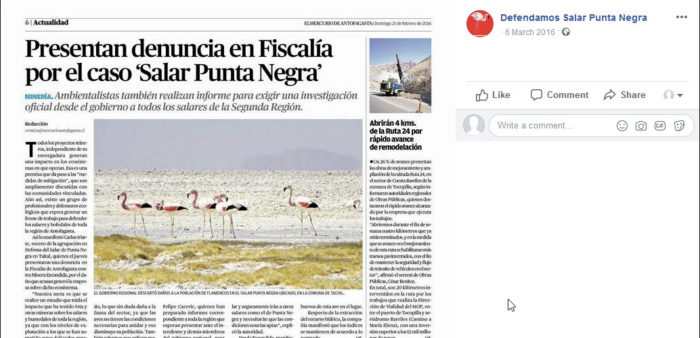
Cubillos points to the experience of the Salar de Punta Negra – another salt flat in the region, located south of Escondida – as a cautionary tale. As with the Salar de Atacama, Escondida had long been pumping groundwater from beneath the flat, though it announced the permanent cessation of this activity in 2017.
Local communities and environmental groups argued that it was too late: the Salar was already dry. ‘Water was extracted from the Salar for more than 20 years, and last year [2017] they stopped,’ says Cubillos. ‘They’re no longer taking water, but the Salar has been destroyed. And this is exactly what we don’t want to happen to the Salar de Atacama.’
The new ‘white gold’
It’s not only copper extraction that threatens the long-term survival of Peine and other rural and indigenous communities in the Atacama Desert. Beneath the Salar de Atacama lies an estimated one-third of the global supply of lithium – the soft, extremely light alkali metal used in batteries for mobile phones, laptops and electric cars.
Even amidst booming demand for electronics, what really looks set to fuel the rush for this ‘white gold’ is the market for electric vehicles, which require far larger quantities of the metal for their batteries. A typical electric car contains about 20 kilos of lithium, compared to about 3 grams in a smartphone. Demand is set to quadruple by 2025, as companies, governments and consumers look to phase out the use of petrol and diesel vehicles.
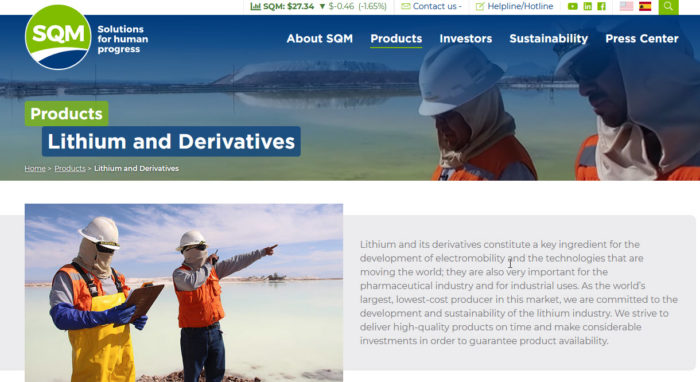
There are currently two main players in Chile’s burgeoning lithium industry: the Sociedad Química y Minera de Chile (SQM), a former state-owned company that was privatised during the dictatorship and handed over to Julio Ponce Lerou, son-in-law of military strongman Augusto Pinochet. The other is the American chemical company Albermarle. However, there are several other interests trying to establish a foothold.
The lithium that comes from the so-called ‘lithium triangle’ of Chile, Argentina and Bolivia is contained within brine, salty groundwater that lies underneath the salt flats. To extract the lithium, companies simply pump the brine into pools on the surface and let the sun evaporate the water. What’s left over can then be processed. The mining companies claim this process is clean and that extracting the brine doesn’t affect the wider ecosystem.
But this remains a moot point. While some specialists suggest that the brine reserves are separate from the freshwater sources local communities depend on, others argue that over-extracting brine from beneath the salt flats is reducing freshwater found in other parts of the watershed – a claim backed up by local communities.
Mariana Chilveto works for the Consejo de Pueblos Atacameños, an organisation which brings together 18 indigenous communities in the region. ‘I think that everyone is sort of worried,’ she says. ‘And not just people from outside. The atacameños have been here for 10,000 years, and if you listen to the elders – they call them los abuelitos [the grandparents] – they all say the same thing. For me, that’s the strongest evidence, the testimony of the people.’
And lithium production does still require vast quantities of fresh water to wash and process the final product. Producing a tonne of lithium typically consumes over two million litres of water. Moreover, it’s hard to know exactly how much water the companies are using, as a comprehensive scientific study on the salt and freshwater reserves beneath the Atacama Desert has never been conducted.
‘In Chile we don’t have this basic information,’ says Chilveto. ‘So the information is produced by the same companies when they have to present their environmental impact studies. It’s the same company which presents the information, defines the kind of monitoring they’ll do, and determines the loss.’
Locals left behind
Six hours over the border in Argentina lies the indigenous village of Susques. With a population of just over a thousand, far from any major city, it is a sleepy place. Kids play on the dusty ochre streets, as cars whizz by occasionally. On the day we are there, only a few shops are open, selling empanadas and cans of Coke.
Despite its isolation, Susques is at the centre of an escalating dispute. It is located between two major salt flats – the Salar de Olaroz and Salar de Salinas Grandes – both of which are home to active lithium projects, while in 2021, production will begin at the Caucharí-Olaroz operation, a $400-million project run by Minera Exar.
In 2014, a group of locals known as Colectivo Apacheta – mostly goat and llama herders – brought a case against the provincial government of Jujuy, arguing that their right to Free, Prior and Informed Consent (FPIC) had been violated with regard to the exploration and construction work for the Caucharí-Olaroz operation.
They alleged that the government had manipulated the consultation process, involving only a small subsection of the local community known to have a more favourable position towards the mining companies. However, the courts dismissed the case in 2015.
Carlos Guzmán is one of the group’s leaders. As in Chile, water access is the main flashpoint. ‘We’re against them [the mining companies] because we can see they’re consuming a lot of water,’ he says. ‘In the Puna region [Andean grasslands in the north of Chile and Argentina], it rains very little. If they carry on like this, the area will be dry. And for us, water means life.’
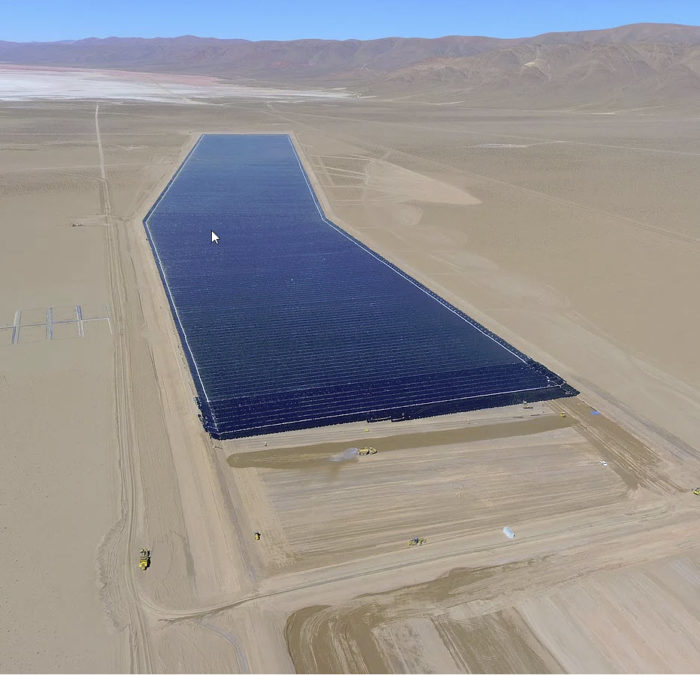
Exar has cut deals with several of the local indigenous communities, including Susques, which is due to receive around $12,000 a year, adjusted for inflation. For an indigenous community in Jujuy – one of Argentina’s poorest, most remote and historically neglected provinces – this money may well make some difference.
However, the plant is set to produce around 25,000 tonnes per year of lithium carbonate, which would have been worth a staggering $425 million at 2018 values. With the price of lithium continuing to rise, it’s clear that while vast wealth will be extracted from beneath these salt flats, only a tiny fraction of it will go to the people of Susques and the other indigenous communities in the region.
‘We have to look at the total they make from what they extract,’ says Guzmán. ‘Perhaps we receive 0.3 per cent through employment. But they keep the other 99.7 per cent for themselves. So who are the ones getting swindled here?’
And with companies and governments seemingly intent on pushing ahead with lithium projects, regardless of the potential environmental consequences, these communities now face an uncertain future.
‘We’re caring for something we want to leave for our grandchildren, for our great-grandchildren.’ says Guzmán. ‘This is what we’re fighting for.’

